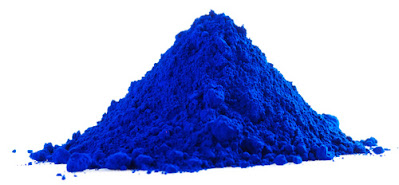What is ultramarine blue pigment used for?
Ultramarine blue is a vivid and
vibrant blue pigment that has been historically used for various artistic,
decorative, and industrial purposes. It is known for its deep blue color and
was traditionally made from the semi-precious gemstone lapis lazuli. In modern
times, synthetic versions of ultramarine blue are more commonly used due to
their cost-effectiveness and availability.
Here are some of the uses of ultramarine blue pigment:
Art and Painting:
Ultramarine blue has been widely used by artists for centuries to create
intense blue hues in paintings, frescoes, and other forms of visual art. It was
particularly popular in Renaissance and Baroque art.
Decorative Arts: The
pigment has been used in the decoration of ceramics, glass, and textiles,
including tapestries, carpets, and clothing.
Printing and Printing Inks:
Ultramarine blue has been used in the production of inks for printing,
including traditional letterpress and modern offset printing.
Cosmetics and Personal Care
Products: Ultramarine blue is used in cosmetics, such as
eye shadows, eyeliners, nail polishes, and other personal care products.
Plastics and Polymers: The
pigment is used in the coloring of plastics and polymers, adding a bright blue
color to various plastic products.
Coatings and Paints:
Ultramarine blue is used in the manufacturing of paints, coatings, and
industrial finishes to provide a durable and rich blue color.
Crayons and Colored Pencils: The
pigment is often used in the production of crayons, colored pencils, and other
coloring materials.
Food and Beverages: In
some cases, ultramarine blue may be used as a food coloring in certain food and
beverage products. However, its use in food is more limited compared to other
food dyes.


Comments
Post a Comment